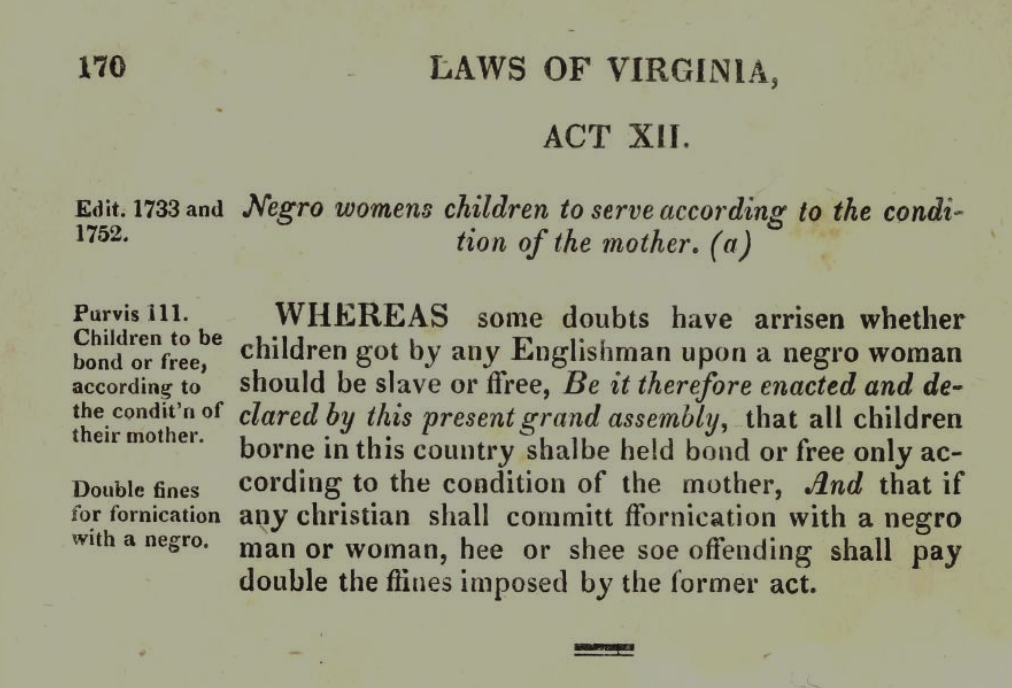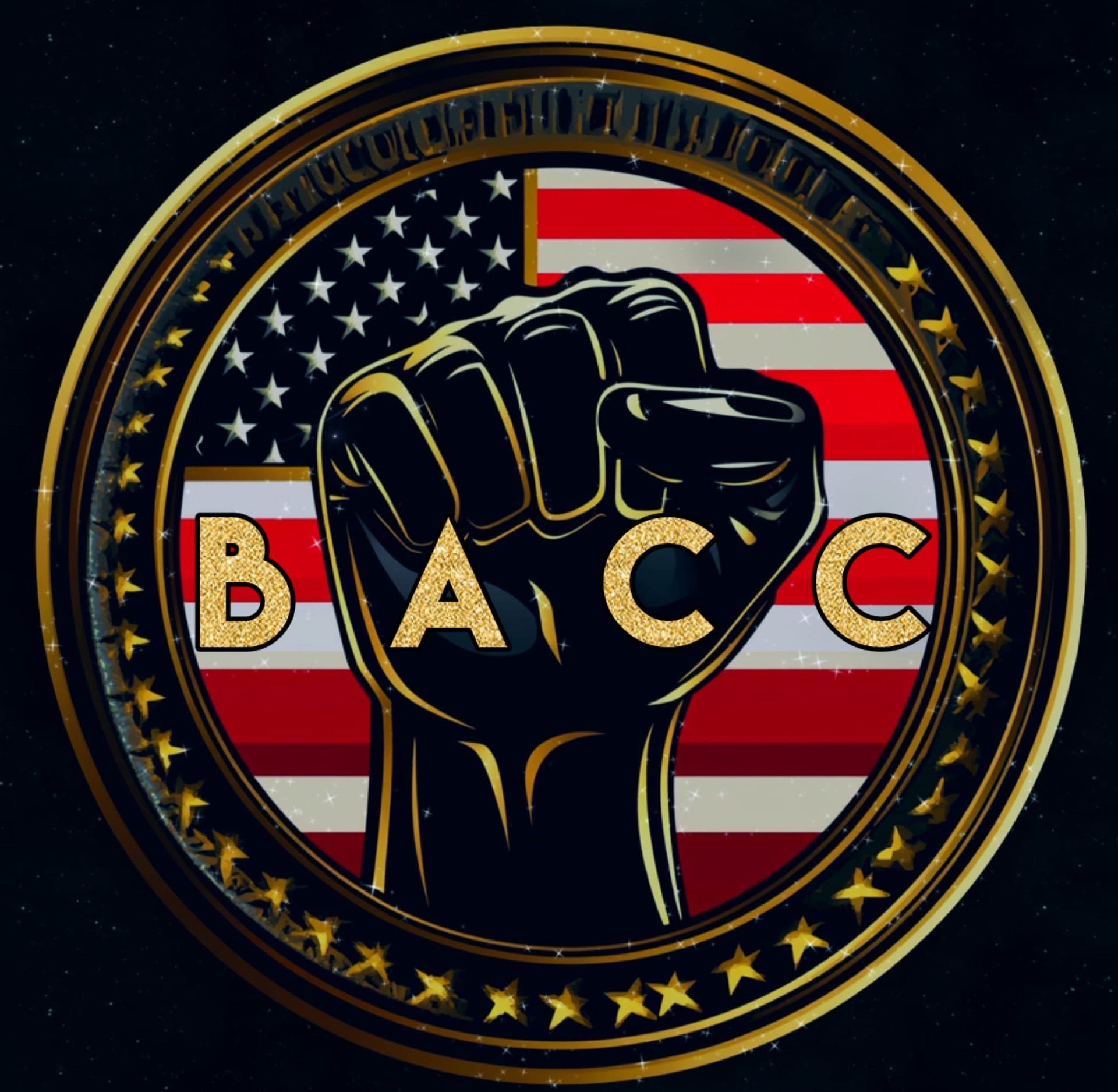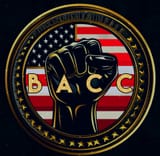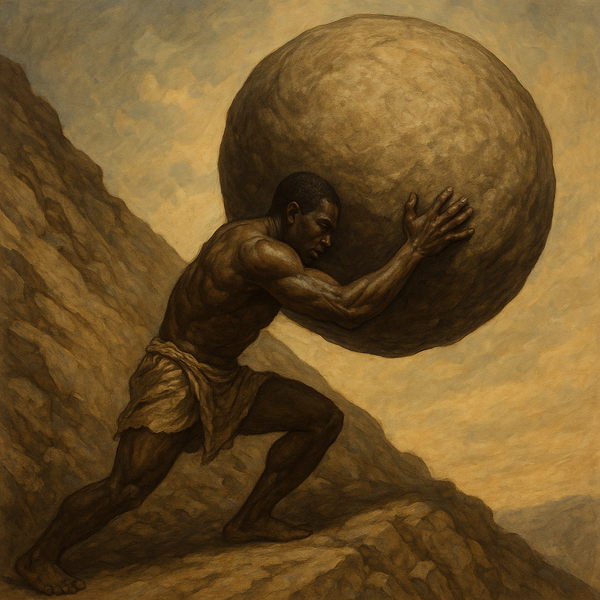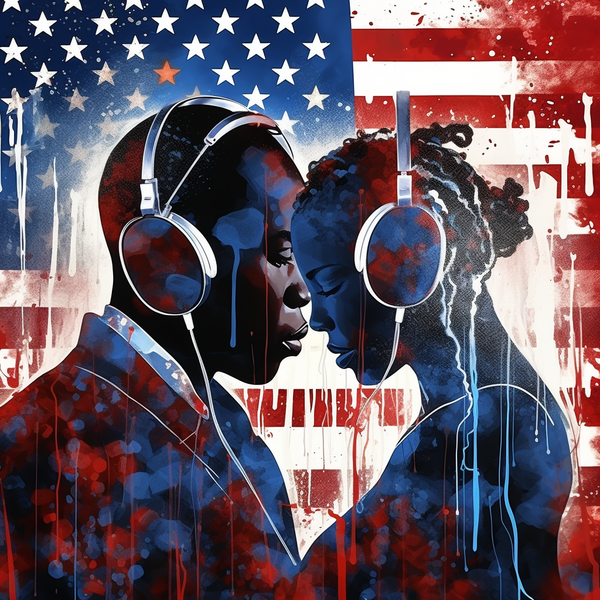Partus Sequitur Ventrem & Black Fatherhood

Partus Sequitur Ventrem which comes from the Latin phrase "offspring follows belly" holds its origins in the Roman era, which stated that children of enslaved women would themselves follow the status of the mother. While children born of enslaved women were often enslaved themselves, Roman law allowed for more flexibility by allowing the status of the child's father to dictate the child's eligible for manumission. In addition, the Roman practice of this law was not racialize in the same way, because it extended to people from territories that were conquered by Rome (e.g. Gauls, Greeks, Germans & Africans) and slavery was more about conquest than race. These citizens were also afforded more flexibility to manumit and rise among the ranks of the social and political structure.
In American chattel slavery, Partus Sequitur Ventrem enacted first in Virginia in 1662, stated a similar concept of children born from enslaved Black women would themselves be enslaved. It reinforced racialized slavery, specifically making enslavement a condition exclusively tied to Blackness instead of JUST social/political status. It created a permanent caste system, where even mixed-race children of female enslavers and enslaved men, free mulatto women and enslaved men, remained enslaved.
So why is the narrative that Partus Sequitur Ventrem ONLY effected enslaved Black women harmful?
Well here's why:
The law itself extended to the offspring of enslaved Black men through forced breeding/seasoning plantations & Slave/Black codes. While the legal doctrine of partus sequitur ventrem ensured that children of free women and enslaved Black men were born free, Southern states still imposed restrictions and legal barriers that sought to control or even re-enslave these children. These restrictions were aimed at limiting the growth of the free Black population and maintaining white supremacy. Some states (like Virginia after 1806) required newly freed Black people to leave the state within a year or face re-enslavement.
Children whose mothers were free would have grounds to argue for their freedom, though whether they were positioned to make that case depended on a variety of scarce resources. In Maryland, heritability was law, but by descent from either a mother or father who was enslaved. Partus became law in New York for “all and every Negro, Indian Mulatto and Mestee Bastard Child & Children” in 1706; South Carolina echoed Virginia’s law in 1740; and Georgia followed suit in 1754.
Even if a free Black woman lived in a state where manumission was allowed, legal and financial hurdles made it difficult for her to free an enslaved husband or other family members. Many Southern states passed laws that made it illegal for free Black people to live without a white guardian or proof of employment. Free Black children of enslaved fathers could be kidnapped and sold into slavery, often with little legal recourse. Some states required free Black people to register with local authorities and carry papers proving their free status. Children of free Black women and enslaved fathers had to be documented, or they risked being presumed enslaved. If the mother moved to a state that did not recognize Black freedom, her children could be illegally enslaved.
White enslavers would sometimes claim that a free Black child had been "wrongfully freed" or that their mother had been enslaved.
Without strong legal representation, these children were often forced back into slavery. The most infamous case was the Reverse Underground Railroad, where free Black children and adults were kidnapped and illegally sold into slavery.
Even Solomon Northup (author of 12 Years a Slave) was a free Black man kidnapped and sold into slavery.
While partus sequitur ventrem meant that children of free women and enslaved Black men were legally free, Southern states actively sought to restrict their rights, limit their opportunities, and even find ways to re-enslave them. Through Black codes, vagrancy laws, and outright kidnapping, white society worked to ensure that the existence of free Black children did not threaten the system of chattel slavery.
This reveals how freedom for Black people in the United States was often conditional and fragile, even when granted by law. The legacy of these restrictions continued into the Jim Crow era, reinforcing racial inequality long after slavery officially ended.
